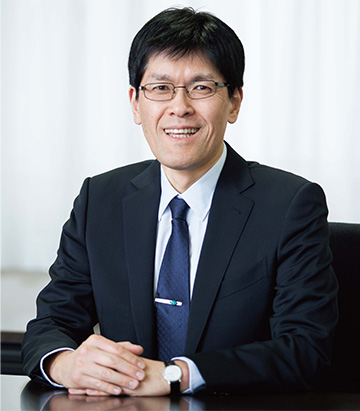
村上 正晃
北海道大学遺伝子病制御研究所 大学院医学研究科 分子神経免疫学・教授
大阪大学免疫学フロンティア研究センター・招聘教授
大学院生(修士、博士、MD-PhD学生)、ポスドク大募集中!!
興味のある方はページ一番下の連絡先にあるアドレスにメールしてください。
学歴、職歴
| 平成元年度3月 | 北海道大学獣医学部修了 |
|---|---|
| 平成元年度5月 | 獣医師免許取得 |
| 平成5年3月 | 大阪大学大学院医学研究科博士課程修了 |
| 平成5年4月~平成11年3月 | 北海道大学免疫科学研究所 助手 |
| 平成11年4月~平成13年3月 | 日本学術振興会海外 特別研究員 |
| 平成13年4月~平成14年8月 | コロラド大学 客員准教授 |
| 平成14年8月~平成19年3月 | 大阪大学大学院医学系研究科 助教授 |
| 平成19年4月~平成26年5月 | 大阪大学大学院生命機能研究科 准教授 |
| 平成26年5月~現在 | 北海道大学遺伝子病制御研究所 大学院医学院 教授 |
| 平成28年4月~令和2年3月 | 北海道大学遺伝子病制御研究所 所長 |
| 平成29年4月~平成30年3月 | 国立大学共同利用・共同研究拠点協議会 会長 |
| 令和3年6月~現在 | 量子科学技術研究開発機構 量子生命科学研究所 量子免疫学グループ グループリーダー(クロスアポイントメント) |
| 令和3年11月~現在 | 自然科学研究機構 生理学研究所 分子神経免疫部門 教授(クロスアポイントメント) |
| 令和4年4月〜現在 | 北海道大学遺伝子病制御研究所 所長 |
| 令和4年4月〜現在 | 国立大学附置研究所・センター会議 第二部会長 |
| 令和5年10月〜現在 | 日本学術会議連携委員(日本免疫学会推薦) |
研究歴
| 平成元年3月~平成5年3月 | 大阪大学大学院医学研究科博士課程 (研究テーマ:サイトカイン信号伝達機構の解析、岸本忠三教授) |
|---|---|
| 平成5年4月~平成11年3月 | 北海道大学免疫科学研究所 (主要研究テーマ:T細胞活性化の副信号修飾を用いた人為的制御、上出利光教授) |
| 平成11年4月~平成13年3月 | Howard Hughes Medical Institute, National Jewish Medical and Research Center, Denver, CO (主要研究テーマ:活性化、メモリーT細胞の生体内での維持機構の解析、Philippa Marrack教授) |
| 平成13年4月 | Integrated Department of Immunology, National Jewish Medical and Research Center and Colorado University Health Science Center, Denver, CO (主要研究テーマ:メモリー T細胞の維持機構の解析) |
| 平成14年8月 | 大阪大学大学院医学系研究科 (主要研究テーマ:自己免疫疾患の発症機序の解析、平野俊夫教授) |
| 平成19年4月~平成26年5月 | 大阪大学大学院生命機能研究科 (主要研究テーマ:炎症回路の病理学的、生理学的意義の解析) |
| 平成26年5月~現在 | 北海道大学遺伝子病制御研究所、大学院医学研究科 (主要研究テーマ:慢性炎症における神経系-免疫系の相互作用と分子基盤の研究) |
所属学会
- 日本免疫学会(評議員、編集委員、学術委員、きぼうプロジェクト選考評価委員)
- 日本リウマチ学会(基礎研究推進委員2015年度-2018年度)
- 日本生化学会(評議員)
- 日本神経免疫学会(評議員)
- 日本サイトカイン学会(副会長)
- 日本量子生命学会(評議員)
- 日本宇宙航空環境医学会
- 北海道医学会(財務委員長)
- アメリカ免疫学会
- 国際インターフェロン・サイトカイン学会
- 自己免疫研究会(幹事)
その他
- International Immunology, Core Editor
- Scientific Reports (Nature Publishing Group) Editorial Board Member
- Bioelectric Medicine, Editorial Board
- Frontiers Community (Multiple Sclerosis and Neuroimmunology), Associate Editor
- Frontier Inflammation, Associate Editor
主な賞・助成金
- 2023年度 ノバルティス・リウマチ医学賞
- 2018年度 武田科学振興財団助成金
- 2015年度 上原記念生命科学財団助成金 (Grant in aid of the Uehara memorial foundation)
- 2015年度 Frontiers Travel Award 2015
- 2015年度 公益財団法人三菱財団自然科学研究助成
- 2014年度 公益財団法人発酵研究所研究助成
- 2014年度 武田報彰研究助成
- 2013年度 Frontier 2013 award
- 2012年度 Frontier 2012 award
- 2012年度 内藤記念科学振興財団助成金 (Grant in aid of the Naito foundation)
- 2012年度 上原記念生命科学財団助成金 (Grant in aid of the Uehara memorial foundation)
- 2012年度 日本ワックスマン財団助成金 (Grant in aid of Waksman foundation of Japan)
- 2012年度 武田科学振興財団医学系研究(基礎系) 助成金 (Grant in aid of Takeda science foundation)
- 2007年度 中冨健康科学振興財団助成金 (Grant in aid of the Nakatomi foundation)
- 2007年度 上原記念生命科学財団助成金 (Grant in aid of the Uehara memorial foundation)
- 2002年度 上原記念生命科学財団特定研究助成金 (Grant in aid of the Uehara memorial foundation)
- 2002年度 かなえ医学振興財団助成金 (Grant in aid of Kanae Foundation for the promotion of medical science)
- 2001年度 持田記念医学薬学振興財団助成金 (Grant in aid of Mochida memorial foundation for medical and pharmaceutical research)
業績
2024年3月11日作製